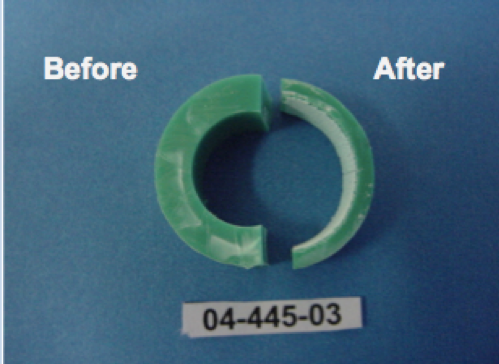Controlling Risk: Do Your Research Before Choosing Pipe Material
Every piping project begins with an assessment of how to ensure the integrity of the system over its lifecycle and limit future liability. What are the steps you can take to ensure the pipe material you use is not exposing your project to unnecessary risk? First and foremost, you need to be informed on proper installation and handling of the material. To help educate installers avoid potential risk, FlowGuard® CPVC provides industry leading training resources on installation, safety and even how it compares to the competition. We encourage builders to contact us with any installation questions prior to beginning work.
Another way you can control risk is to do a quick internet search to see if there are any class action lawsuits involving the pipe material or brand. These types of suits provide redress to owners who suffer the consequences of plumbing materials that have spontaneously failed due a defect in design or materials. While class action lawsuits in the residential plumbing industry are not common in this region, they do happen with more frequency in the United States in all kinds of uses.
In fact, since 2001, there have been at least 22 class action lawsuits involving plumbing pipes and fittings and at least 39 builders have been named as co-defendants in these lawsuits. Class action lawsuits can mean big money – in the 1990s a lawsuit involving polybutylene plumbing systems was settled by Shell Oil for more than $1 billion – marking one of the largest building product defect settlements in history. In 2001, a group of builders and developers settled a galvanized piping lawsuit for $41 million. More recently, in 2018, NIBCO agreed to a $43.5 million settlement to a suit based on material defects in its PEX piping and fittings. Many other leading companies in the plumbing pipe and fittings business have settled large class action lawsuits within the last decade (see here, here and here).
Zero Class Action Lawsuits for FlowGuard CPVC Pipes
The good news is that while these lawsuits have plagued other materials such as copper, galvanized and PEX plumbing systems, CPVC is the only material commonly used in American hot-and cold-water distribution piping never to have been the subject of a class action lawsuit related to plumbing applications.
Most class action suits brought in the industry have resulted from a fundamental incompatibility between the plumbing system material and the water flowing through it. Chlorine, a common additive used in water treatment, is the primary reason. It causes degradation in materials such as PPR, PB and PEX which results in pinhole leaks and pipe failures.
CPVC is a chlorinated material and therefore immune to chlorine-induced degradation. There are no known water conditions that can cause CPVC to spontaneously fail.

Effects of hot chlorinated water on PPR pipe, with significant
erosion of the pipe wall after only 9 months.
Builders and contractors don’t have the time or money to deal with unnecessary risk. Always do your research, but if you want an easier solution, choose FlowGuard CPVC pipe and know that you are getting a material that is cost-effective, easy to install and puts you in control of your liability.
As you start to consider your next project, contact us with any questions.
.png)
-1.png)
